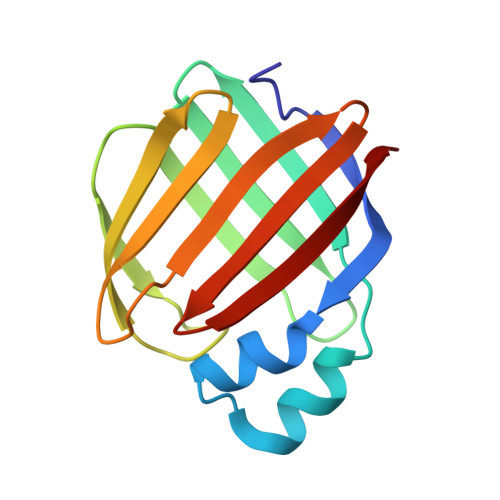Light controlled reversible Michael addition of cysteine: a new tool for dynamic site-specific labeling of proteins.
Maity, S., Bingham, C., Sheng, W., Ehyaei, N., Chakraborty, D., Tahmasebi-Nick, S., Kimmel, T.E., Vasileiou, C., Geiger, J.H., Borhan, B.(2023) Analyst 148: 1085-1092
- PubMed: 36722993
- DOI: https://doi.org/10.1039/d2an01395a
- Primary Citation of Related Structures:
8D6H, 8D6L, 8D6N, 8DB2, 8DN1 - PubMed Abstract:
Cysteine-based Michael addition is a widely employed strategy for covalent conjugation of proteins, peptides, and drugs. The covalent reaction is irreversible in most cases, leading to a lack of control over the process. Utilizing spectroscopic analyses along with X-ray crystallographic studies, we demonstrate Michael addition of an engineered cysteine residue in human Cellular Retinol Binding Protein II (hCRBPII) with a coumarin analog that creates a non-fluorescent complex. UV-illumination reverses the conjugation, yielding a fluorescent species, presumably through a retro -Michael process. This series of events can be repeated between a bound and non-bound form of the cysteine reversibly, resulting in the ON-OFF control of fluorescence. The details of the mechanism of photoswitching was illuminated by recapitulation of the process in light irradiated single crystals, confirming the mechanism at atomic resolution.
- Department of Chemistry, Michigan State University, 578 S. Shaw Ln., East Lansing, MI 48824, USA. babak@chemistry.msu.edu.
Organizational Affiliation:


















